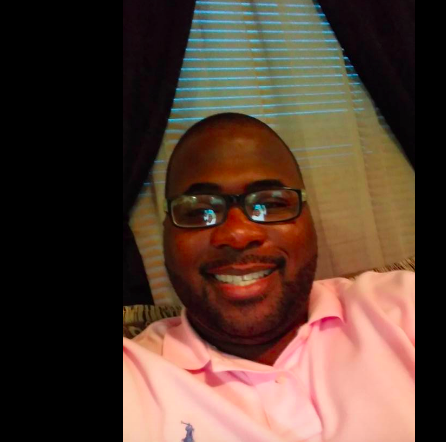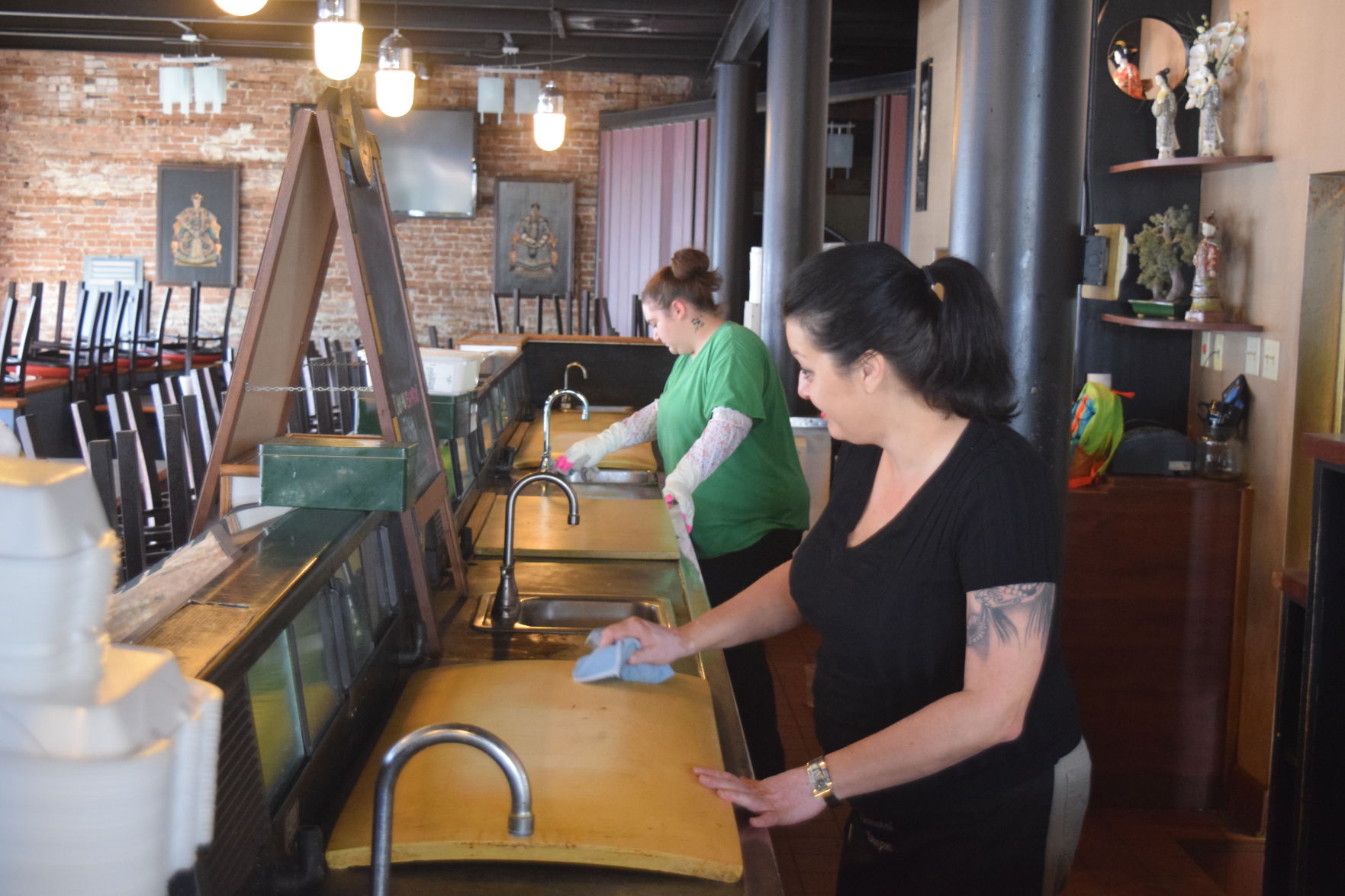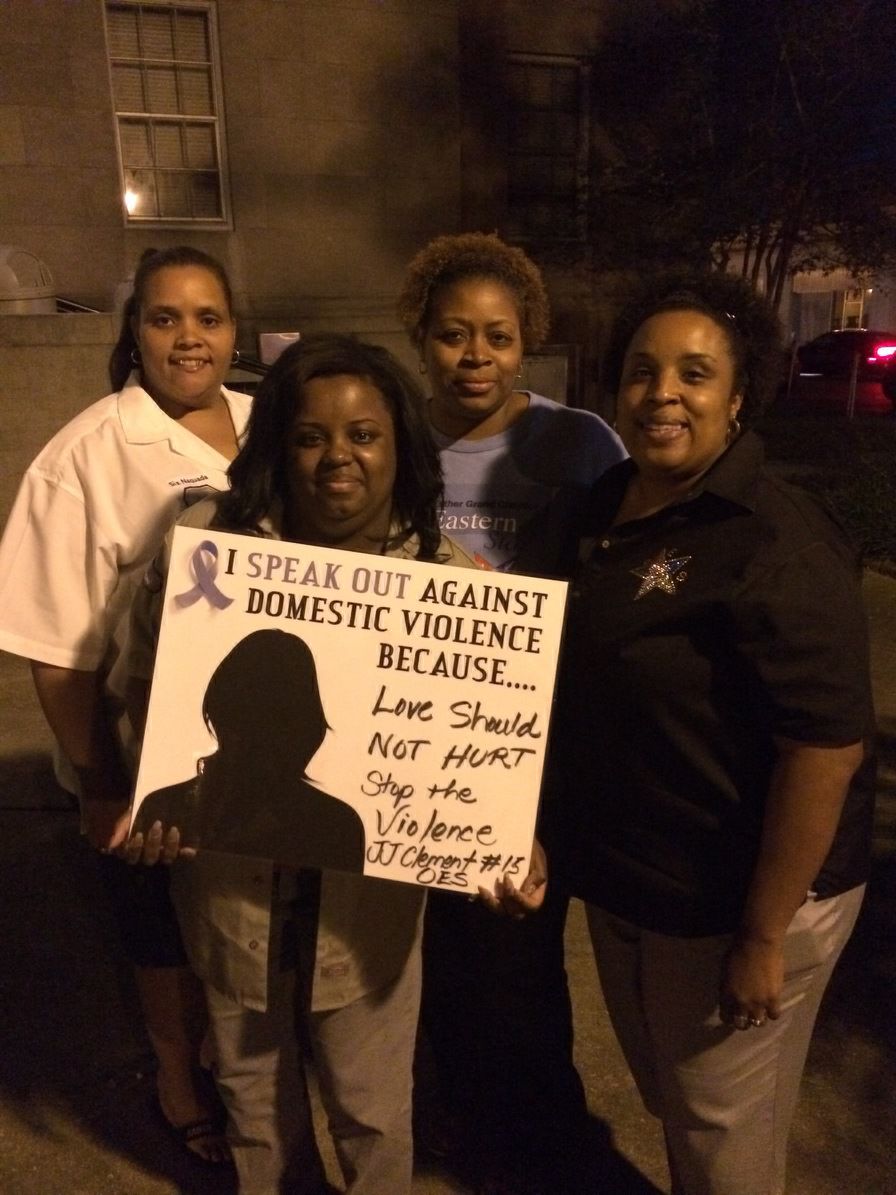
TPSO earns high marks in mid-week stand-off case; suspect in custody
October 11, 2016
They’re baaaaaaaaack! Downtown Houma business to re-open in coming weeks
October 11, 2016Tomorrow, Houma will be covered in more purple than usual in an effort to honor those who’ve faced the worst from their loved ones.
The Terrebonne Parish Council proclaimed Thursday as Paint the Parish Purple Day, part of Domestic Violence Awareness Month this October. Parish residents can participate by wearing purple in honor of domestic violence survivors.
The Haven, a local nonprofit providing support for survivors of both domestic and sexual abuse, is hosting a candlelight vigil tomorrow to drive dialogue on the topic. The vigil begins at 6:30 p.m. at the Terrebonne Parish Courthouse Square. The organization is also hosting a Lafourche Parish vigil on Oct. 18 starting at 6 p.m. at the Lafourche Central Market in Raceland.
In Terrebonne Parish, domestic violence complaints and arrests have decreased this year, although the numbers are still high in comparison to a huge spike in complaints after 2013, according to data from the Terrebonen Parish Sheriff’s Office. Note the following data cited do not include incidents within Houma city limits, as the Houma Police Department did not respond to requests by The Times for domestic violence data.
In 2013, the TPSO received 650 complaints, for an average of 54 complaints per month. That number skyrocketed to 1012 in 2014, an average of 84 incidents per month and a 55 percent increase in one year. The following year, the figure dropped to 981 complaints. In 2016, the TPSO has logged 603 complaints through September, good for 75 per month. If the TPSO receives 70 monthly calls over the next four months, which were mostly lower than the monthly averages in 2013-15, officers would receive 883 domestic violence complaints this year.
For arrests, the TPSO is not on pace to mark its three-year high mark in 2015. In 2013, the parish made 283 domestic violence arrests, which jumped up to 339 in 2016. That number increased further to 348 last year. This year, the TPSO has made 211 arrests through September, on pace for 315 total.
However, the arrest rate is higher than the previous two years but lower than a high in 2013, when officers made an arrest on 33 percent of complaints, after accounting for the 68 dual arrests it made. That number dropped to 26 percent in 2014, rising to almost 28 percent in 2015 and sits a bit above 28 percent so far this year.
The rise in arrest rate may be related to bad news in an already bleak topic, as the ratio of incidents the TPSO classifies as “physical” is the highest it has been since 2013. That year, 68 percent of incidents were deemed physical. The rate fell to 52 percent in 2014 before increasing to 59 percent in 2015. Through September, the “physical” rate sits at 64 percent.
The Times contacted the TPSO to speak with Sheriff Jerry Larpenter about the domestic violence data and how the sheriff’s office addresses those incidents, but he was unavailable to speak.
However, the data are not just raw numbers to analyze and wish to bring down. Each complaint, each arrest carries a story, where people, mainly women, are physically harmed or feel the threat of physical harm from their partners and spouses, the people they love and trust the most. These survivors face the grueling choices of having those loved ones, some of whom they have families with, arrested for their own safety while seeking refuge in sometimes unfamiliar places.
Tomorrow’s vigil, with a theme of “A Walk in My Shoes,” is aimed at making the public more familiar with those stories. The Haven has also promoted stories on its Facebook page to improve understanding of the terror survivors face in the short-term and the lingering doubt and fear the trauma of domestic violence can leave. One such story is that from Shana, a woman in California who described the moments she left her abusive husband and the struggles she’s faced in the years since.
“I begged and pleaded for a room with no luck. I couldn’t go to a shelter for fear I would lose my job if they found out, so I slept in my car that night. Ok, let’s be honest, I didn’t sleep. I waited for him to find me – and then went into work the next day and acted as if everything was normal,” Shana wrote. “My husband worked 30 minutes from our house so I knew that I could, safely, go home at lunch without him there to get something for the next day. I didn’t go home the day after I left because I didn’t know if he would expect that and be there. I knew what the consequence would be for leaving.”
The Haven tries to provide that support for survivors such as Shana through counseling services and shelter for those seeking refuge from their abusers. Melissa Williams, training coordinator at The Haven, said the organization can house upwards of 22 people, those being women, children and families, at its location. She said The Haven also provides support for male victims of abuse, working with local hotels to provide shelter for them. According to Williams, the main shelter is almost always full, wherein The Haven will work with sister agencies in other parishes and local hotels as a last resort for refuge for abuse survivors.
“We’re just finding that our phones are always ringing, and people are just really in need of finding safe places to stay or finding ways to move or get out of the dangerous situation that they’re in,” Williams said.
Williams said The Haven has started to look at intervention services and abuse prevention in the wake of a 2009 national push to help people learn how to not perpetrate violence in the first place. The vigil will also help the public learn how to talk with and support survivors as well as answer the question of what we can all do each day to help prevent domestic violence and sexual assault.
“There’s so many different ways that people can be a part of this movement and learn how to interact with survivors and not to victim blame,” Williams said. “There’s so many things people can do to bring more awareness and action and just be able to talk about it, and just be willing to come to the vigil and see what it’s all about. That’s the first step.”
Shana recounted how she still faces challenges from her abuse, noting she feels uncomfortable with scarves or anything else touching her neck, how she apologizes for everything, how she worries her daughter will fall victim to abuse as she did. However, she noted the trauma may never completely go away, but by working with the many people and support organizations available, a future after abuse is possible.
“Surviving domestic violence is one day at a time. I believe that forgiveness is important in moving on but not forgetting because this made you a stronger person,” Shana wrote. “You lived through something that most people couldn’t. I don’t like people to pity me or apologize for what HE did to me. I want people to see me as a strong woman, a mother and a wife – a woman that survived and is thriving.” •










